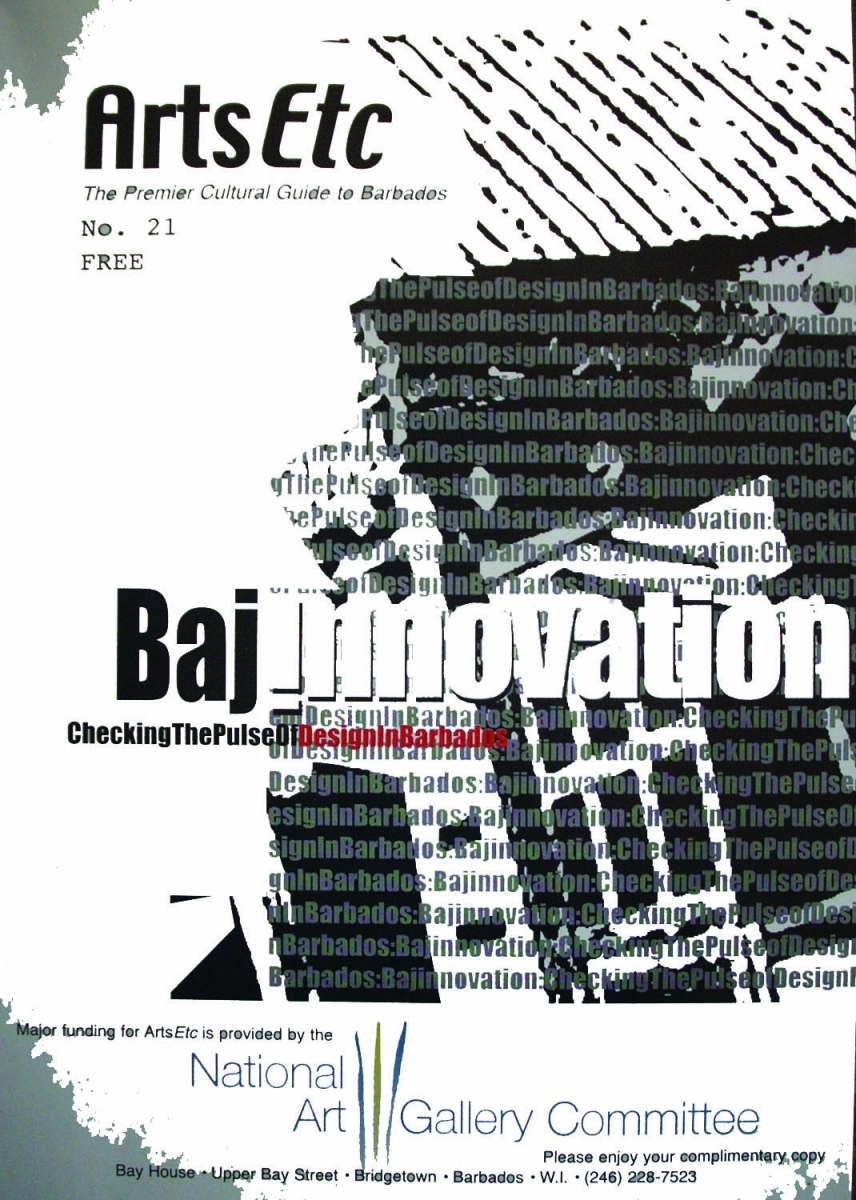
ArtsEtc Inc. 1814-6139
All works copyrighted and may not be reproduced without permission. ©2013 - hoc anno | www.artsetcbarbados.com
All works copyrighted and may not be reproduced without permission. ©2013 - hoc anno | www.artsetcbarbados.com



Published: October 2006
Theme: Bajinnovation: Checking the Pulse of Design in Barbados
Cover: Chattel house abstract (from photo by Sean Ifill)
Contributors: Aguinaldo Belgrave, Glenn Brathwaite, Thom Cross, Steve Devonish, Sean Ifill, Claire Ince, Sarah Venable

BackPage Say #21
Value-added design
By Steve Devonish
Of all the dictionary definitions of design, the one that strikes me is to contrive plans proposed.
Design, for me, is the journey (or contriving) of an idea or concept to a final product while competing with function and reality, especially when the former is in apparent conflict with the latter. The trained designer must be capable and aware of navigating this journey; others, perhaps, less so.
Design, like its execution, depends on many things, including our willingness to be engaged emotionally and intellectually, and our level of understanding (although this can be overrated).
We don’t always realize that our senses are enfolded daily by the design around us: how food is presented, the front page of a newspaper, the look of a vehicle, the way a woman wears the hell out of an outfit, the urge to walk through or past a particular building or openscape. Then again, we may be fully aware but not know why we like or dislike something. Our willingness to discuss what we experience enhances our interaction with design and makes designers of us all. Like Bryan Lawson in his book How Designers Think, I believe we all can design.
Key influences on our relationship with design include technology, tradition, economics, education (formal and informal), and a taste for adventure. In Barbados, there is plenty happening even if the level of discussion suggests otherwise.
The delight and dismay generated by hairstyles worn during the annual interschool sports were a response to raw, indigenous, youthful creativity. The designs grabbed attention and, in the case of those resembling warrior headpieces, fit the context of schools doing battle.
Edwin Nichols, a graduate of Barbados Community College’s Architecture programme, explored the concept of “chaos” in his final year. His inexperience with technology and tradition worked for him, and it was exciting to see how he addressed all technical requirements while leaving his idea for an “imploded” building relatively uncompromised.
Architecture in Barbados is presently dominated by rapid building construction. Some designers will tell you that clients, often seeking to cash in on current opportunities, just want accommodation now; repetition therefore dominates. Civic projects provide opportunities for architecture, but even those are not contributing significantly to design.
Ultimately, it is up to all designers in Barbados to define the added value that our everyday experience with design brings.
Steve Devonish is an RIBA-qualified architect and design lecturer.